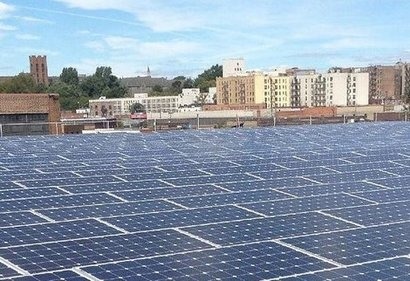
SIR dictates how renewable energy and distributed generation systems sized up to five Megawatts (MW) are connected to the distribution grid. The decision to change SIR provides additional clarity and certainty that will enable more efficient, cost-effective solar development in New York. It will help allow community solar projects to move forward across the state, bringing access to solar to millions of New Yorkers for the first time.
The decision also approves the recommendations put forth jointly by the members of the Interconnection Policy Working Group (IPWG), which was led by New York Department of Public Service (DPS) Staff and the New York State Energy Research and Development Authority (NYSERDA). IPWG consists of diverse participants which include New York state’s investor-owned utilities, a number of the Coalition for Community Solar Access (CCSA) and New York Solar Energy Industries Association (NYSEIA) member companies and other stakeholders.
“We thank the Commission for its action to remove key hurdles to community solar development, and for creating a forum in which utilities and solar companies could work together effectively on solutions to advance clean energy development” said Jeff Cramer, Executive Director of the Coalition for Community Solar Access (CCSA). “This marks one of the final puzzle pieces in making New York’s much-anticipated community solar market a reality. Community solar companies stand ready to invest tens of millions of dollars in private capital to upgrade public energy infrastructure – new distribution lines, new, more reliable equipment at substations – all of these upgrades benefit the solar project participants but also result in a more reliable and resilient electric grid for everyone. The cost-sharing mechanism adopted is a first step toward a smarter way to handle those upgrades.”
Valessa Souter-Kline, Policy Coordinator for the New York Solar Energy Industries Association (NYSEIA), added that putting queue management and limited cost sharing into action, as outlined by the IPWG, is a significant step to improve the efficiency and efficacy of the interconnection process in New York. The new process reflects the commitment of both the development community and the utilities to ensure that project applications move forward fairly and efficiently, resulting in more clean solar energy generation in the ground. NYSEIA and its member companies have been deeply engaged in the IPWG and look forward to continuing to work collaboratively with DPS, NYSERDA, the utilities, and the rest of the IPWG to implement the new procedures and to continue to work on additional critical improvements to the processes for solar interconnection
Under the existing policy in New York State, when developers submit an application for interconnection to a utility’s distribution grid, they are placed in a pipeline while the utility studies their project to determine what upgrades to the local electric system would be required to connect the project to the grid, and how much those upgrades would cost. The presence of proposed projects ahead of an application in this “queue” can have profound impacts on the costs and timelines for interconnection whether or not the other proposed projects are ever built.
A number of important changes will now be made that will increase the efficiency and transparency of this process. It requires applicants in the queue to demonstrate proof of property owner consent within 30 days so that highly speculative projects are not taking up valuable space in the queue. Additionally, it requires developers to abide by binding decision-making and payment timelines to ensure that projects move along at a reasonable pace and that non-viable projects do not forestall projects that follow in the queue from moving forward in the most efficient manner possible. It also takes an important first step toward more equitable distribution of grid upgrade costs among solar projects utilising common upgrades that benefit more than one project.
According to Hannah Masterjohn, CCSA Board Chair and VP of Policy and Regulatory Affairs at community solar company Clean Energy Collective, an efficient and transparent interconnection queue process and a fair way to share the costs of upgrading the state’s electric system will be increasingly important to meeting the growing demand for community solar. Clean Energy Collective stated that it appreciates the collaboration of the New York utilities in this process and that it looks forward to working with colleagues across the state to bring local clean power to more New Yorkers through community solar.
Image: On Force solar energy project, Bronx, New York
For additional information:

